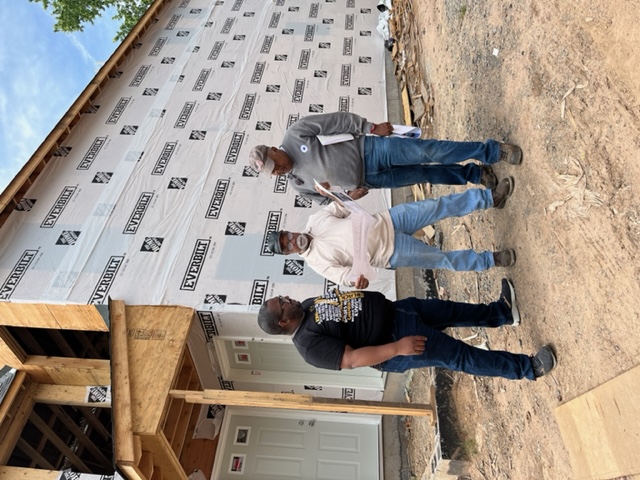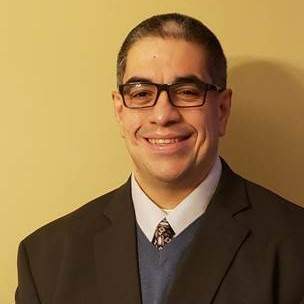A LISC Program to Train Affordable Housing Developers is Sparking New Work—and Networks—in Newark
LISC has been running its Housing Development Training Institute programs for more than 30 years, helping emerging affordable housing professionals hone their skills and make connections. Now LISC Newark has launched its own HDTI to grow the pool of developers of color and reinvigorate industry networks that are imperative to accessing capital and creating the quality affordable housing that New Jersey communities desperately need.
LISC Newark has embarked on a new way to revive affordable housing initiatives in New Jersey’s largest city. Its centerpiece is a 19-week training program targeting a rising generation of real estate developers who can work together as a network to meet local demand.
LISC launched Newark’s Housing Development Training Institute (HDTI) online in 2021, building on more than 30 years of HDTI programming that has readied hundreds of emerging developers in other states (especially California, where LISC initiated the program), and has led to the creation of tens of thousands of units of affordable housing. Like a boot camp for those who want to close the gap in affordable homes, HDTI is now particularly targeted at growing the ranks of developers of color and sparking the affordable housing market in historically underinvested places.
Newark’s inaugural HDTI class, which was supported by Prudential Financial as part of their Inclusive Solutions initative, included directors and managers from community development groups, CDFIs and nonprofits, along with real estate developers of color from around the city and across New Jersey. In the months since graduating last fall, the 30 alumni say the skills they learned are already yielding promising results as they apply them to new projects.

William Crawley (right), with colleagues on a jobsite, completed Newark's inaugural HDTI program in 2021.
Building an Ecosystem of Professional Networks
For Jorge Cruz, LISC Newark’s executive director, HDTI has an added goal for his city: creating professional networks within the affordable housing market. Collaborations of nonprofit and private developers are sorely missing in Newark, as they largely disappeared in the aftermath of the mortgage foreclosure crisis of the Great Recession.
“Our commitment to HDTI is based on doubling down on our efforts to contribute to local ecosystems,” says Cruz. “We know that affordable housing in our market can’t just be about what LISC does, project by project. Maximum impact has to be fueled by building capacity with mission-aligned developers to address the city’s needs.”
That mandate influenced the make-up of Newark’s inaugural class, says LISC Newark’s deputy director Judith Thompson-Morris. “Some were already involved in housing development at some level and using the training to deepen what they knew,” she says. The organizers also included people who were new to the field, to help diversify the group of professionals in the city.
There is a clear urgency to HDTI training in the present moment. Studies from Rutgers University show that demand for affordable housing outstrips supply in Newark by an enormous margin and the city needs over 16,000 homes and apartments renting at approximately $750 a month to close the gap. The fallout of the Great Recession and the mortgage foreclosure crisis disproportionately affected Black and Brown residents, many of whom are struggling to access affordable housing. Now, speculative investors account for nearly half of the home sales in the community.
A Robust Curriculum
HDTI’s curriculum maps out a complete series of steps to move housing development projects from conception to completion. Lectures by professionals from LISC and other lenders are supplemented by simulations that let participants enact a variety of scenarios and practice mock interactions with loan officers, government officials or even stakeholders. Newark HDTI instructors, moreover, bring decades of experience in the fields of housing, finance and economic development to the classroom.
The program opens with an overview of the market and the anatomy and underwriting of construction loans. It spells out the criteria used to test a project’s feasibility. Later sessions focus on practical, on-the-job skills such as the art of negotiation or strategies for recruiting a team of contractors, tax-credit experts, and other players that are key to completing a development.
 |  |
Jorge Cruz, Executive Director of LISC Newark (left) and Judith Thompson-Morris, Deputy Executive Director of LISC Newark
HDTI dives directly into some of real estate’s most complex finance topics. Chief among these is what developers call the “capital stack,” the layered and frequently fluctuating sources of funding that get projects off the ground but see them to fruition. Newark’s HDTI instructors put special attention on the cost of doing business in New Jersey and the full range of what is available including development loans, tax credits, subsidies, and personal equity.
“In New Jersey, a lot of subsidy layering is required to develop affordable housing that meets the needs of low- to moderate-income households and at the same keep the developer’s bottom line intact,” says LISC’s Thompson-Morris. “That makes it imperative to work with the city and the state to access capital, subsidies, tax abatements, state mortgage financing, and a variety of loan products, especially at the early stages of feasibility studies and predevelopment.”
Helen Dunlap, a longtime instructor for HDT, says the course also looked to incorporate new ideas on topics such as energy conservation, sustainability, community safety and the link between healthcare and housing. “Today we have a better understanding of how the condition of living spaces and where people live affect their health, she says. “Its topics like these that make the course relevant.”
In a City, It Takes a Village
The most important takeaway, say graduates, is the sense of community and solidarity that developed among the developers. Networking of this sort is vital in the real world and provides a source of potential partners for future projects. Real estate developers seldom work alone: They need investors, contractors, policy experts and managers to secure necessary funding that often run to seven or eight figures.
Networking pays other dividends, too. “Fostering a network of project management professionals who share information and provide peer support is a mirror image of how housing development works in the real world,” says Dunlap. In some cases, it can help open doors at lending institutions and to other sources of critical capital to get projects going. It can also tap into the expertise of other developers in complex areas such as construction management, subsidies, incentives and tax credits. Connections can even help speed up a call back from policymakers on key questions.
Bill Crawley, who came to Newark’s HDTI with over 15 years of experience in development, housing and finance, wanted the opportunity to build a network and learn more about current New Jersey housing incentives
He recounts how an HDTI class colleague helped him connect with a community development banker to start discussing financing, a request that otherwise might have been slow tracked. “It took just an email by me to the bank and a cc to my class colleague, and I got a response immediately,” Crawley recalls. “So often, when you’re first connecting with a new bank, there’s a lot of nonsense before you actually get someone on the phone. In this case I’ve already had two meetings with them about a current project and looking at a loan in the high six-figures.”
Tony Tolles, director of real estate development for the Newark nonprofit New Community Corporation, says HDTI helped him get a better grasp of the complexities of the affordable housing market. Tolles came to the course with extensive experience heading the finances of nonprofits but he’d recently taken over real estate projects for New Community and needed guidance. “One of the biggest challenges has been how to identify a viable project, develop it, and later get the capital stack that makes a deal come together,” he says. “It’s a new world for me, especially when it comes to identifying where the money to fund projects is, especially in the inner city where we don’t have a lot of equity to start with.”
“The best way to learn,” he adds, “is through interaction with other people, and [at HDTI], you got to see what makes a deal come together, what priorities to set and just where to find the money you need.”
To 2.0 and Beyond
LISC Newark is pressing on with ways to help graduates strengthen their credentials further. This past spring, the organization unveiled a “2.0” version of HDTI, one that centers on helping six of the 2021 graduates get their specific projects they began in last year’s class to the finish line. Participants are teamed with mentors from various facet of the industry, including developers and lenders. They meet weekly with their coaches to talk concretely about how to move closer to ribbon-cutting day.
“We are building on their knowledge base with the added benefit of deep coaching to help them develop the first project in their pipelines,” says Judith Thompson-Morris. “If we provide the support to make it a success, we’re helping emerging developers get into the business for the long-term.”